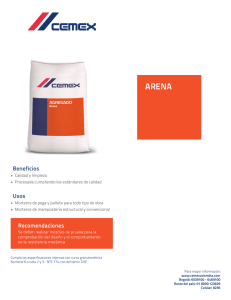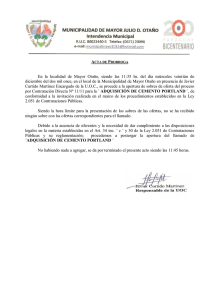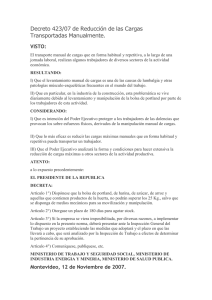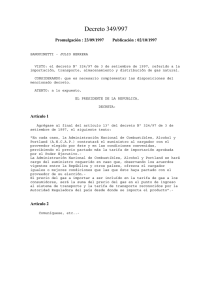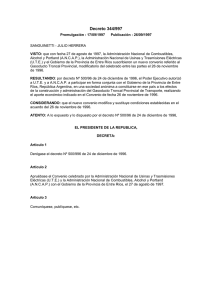RESUMEN Debido al acelerado crecimiento urbano de las
Anuncio
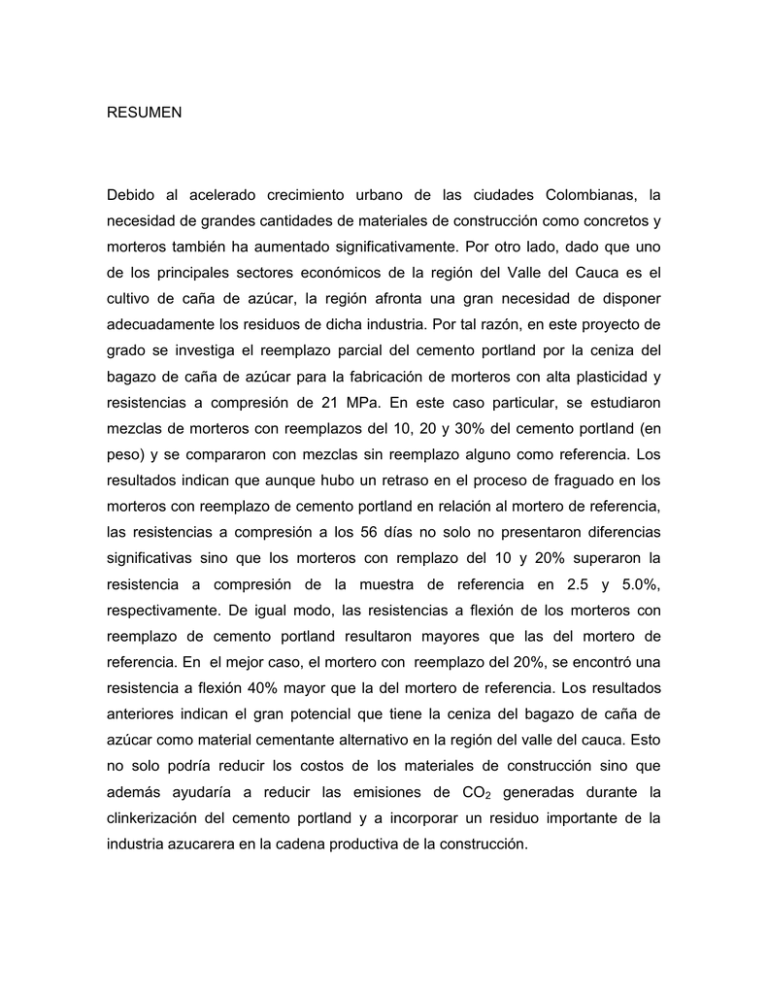
RESUMEN Debido al acelerado crecimiento urbano de las ciudades Colombianas, la necesidad de grandes cantidades de materiales de construcción como concretos y morteros también ha aumentado significativamente. Por otro lado, dado que uno de los principales sectores económicos de la región del Valle del Cauca es el cultivo de caña de azúcar, la región afronta una gran necesidad de disponer adecuadamente los residuos de dicha industria. Por tal razón, en este proyecto de grado se investiga el reemplazo parcial del cemento portland por la ceniza del bagazo de caña de azúcar para la fabricación de morteros con alta plasticidad y resistencias a compresión de 21 MPa. En este caso particular, se estudiaron mezclas de morteros con reemplazos del 10, 20 y 30% del cemento portland (en peso) y se compararon con mezclas sin reemplazo alguno como referencia. Los resultados indican que aunque hubo un retraso en el proceso de fraguado en los morteros con reemplazo de cemento portland en relación al mortero de referencia, las resistencias a compresión a los 56 días no solo no presentaron diferencias significativas sino que los morteros con remplazo del 10 y 20% superaron la resistencia a compresión de la muestra de referencia en 2.5 y 5.0%, respectivamente. De igual modo, las resistencias a flexión de los morteros con reemplazo de cemento portland resultaron mayores que las del mortero de referencia. En el mejor caso, el mortero con reemplazo del 20%, se encontró una resistencia a flexión 40% mayor que la del mortero de referencia. Los resultados anteriores indican el gran potencial que tiene la ceniza del bagazo de caña de azúcar como material cementante alternativo en la región del valle del cauca. Esto no solo podría reducir los costos de los materiales de construcción sino que además ayudaría a reducir las emisiones de CO2 generadas durante la clinkerización del cemento portland y a incorporar un residuo importante de la industria azucarera en la cadena productiva de la construcción. ABSTRACT Due to the fast urban growth of Colombian Cities, the need of huge amounts of building materials such as concretes and mortars has also significantly increased. On the other hand, considering that sugar cane production is an important economic sector in the Valle del Cauca region, significant amounts of by-products from this industry are required to be adequately disposed. Therefore, in this final career project, the partial replacement of Portland cement by fly ash coming from the bagasse of sugar cane to produce high plasticity mortars with 21 MPa as compressive strength is investigated. In this case, mortar mixes with replacements of 10, 20 and 30% (on a weight basis) of Ordinary Portland Cement were compared to mixes with no replacement as references. Results show that although there was a delay in the setting time from mortar mixes with cement replacement compared to reference mortar, no significant differences were observed in the compressive strength at 56 days. In the case of mortar mixes with 10 and 20% replacement, the difference in compressive strength was not only non-significant, there was an increase of 2.5 and 5.0% in the compressive strength compared to the reference mortar, respectively. Similarly, the flexural strengths of mortars with replacement were higher than the one from the reference mortar. In the best case, the mortar with 20% replacement, a 40% higher flexural strength compared to the reference mortar was observed. The presented results indicate that the fly ash coming from the sugar cane processing has a great potential as alternative cementitious material in the Valle del Cauca region. This not only might reduce the costs of building materials, this could also reduce the CO2 emissions generated in the clinkerization process of Portland cement and also might incorporate an industrial waste in the economic cycle of construction industry.
